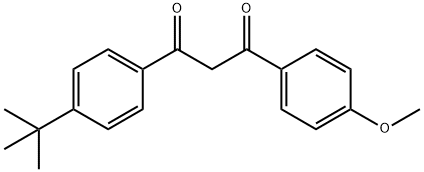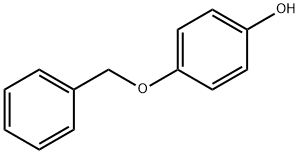1-(4-Methoxyphenyl)-3-(4-tert-butylphenyl)-1,3-propanedione , >98.0% , 70356-09-1
Synonym(s):
1-(4-Methoxyphenyl)-3-(4-tert-butylphenyl)-1,3-propanedione;Butyl methoxydibenzoylmethane
CAS NO.:70356-09-1
Empirical Formula: C20H22O3
Molecular Weight: 310.39
MDL number: MFCD00210252
EINECS: 274-581-6
| Pack Size | Price | Stock | Quantity |
| 5G | RMB43.20 | In Stock |
|
| 25G | RMB45.60 | In Stock |
|
| 10g | RMB53.60 | In Stock |
|
| 100G | RMB121.60 | In Stock |
|
| 500G | RMB425.60 | In Stock |
|
| 2.5kg | RMB1535.20 | In Stock |
|
| others | Enquire |
PRODUCT Properties
| Melting point: | 81-84 °C |
| Boiling point: | 463.6±35.0 °C(Predicted) |
| Density | 1.079 |
| vapor pressure | 0Pa at 25℃ |
| storage temp. | Inert atmosphere,Room Temperature |
| solubility | Chloroform (Slightly), DMSO (Slightly), Methanol (Slightly, Heated, Sonicated) |
| pka | 9.74±0.13(Predicted) |
| form | Solid |
| color | White to Pale Yellow |
| Water Solubility | 27μg/L at 20℃ |
| λmax | 356nm(EtOH)(lit.) |
| Merck | 14,888 |
| InChIKey | GTIRDWBOUTYFQO-UHFFFAOYSA-N |
| LogP | 6.1 at 20℃ |
| CAS DataBase Reference | 70356-09-1(CAS DataBase Reference) |
| EPA Substance Registry System | 1,3-Propanedione, 1-[4-(1,1-dimethylethyl)phenyl]-3-(4-methoxyphenyl)- (70356-09-1) |
Description and Uses
Avobenzone is a full-spectrum ultraviolet A (UVA) blocker. It inhibits UVA-induced increases in melanin levels and tyrosinase activity in B16/F10 melanoma cells (IC30s = 21.94 and 24.25 μM, respectively). Avobenzone (30 μM) also inhibits UVA-induced production of reactive oxygen species (ROS) and 8-hydroxy-2''-deoxyguanosine (8-OH-dG; ), as well as inhibits UVA-induced depletion of glutathione (GSH; ), in B16/F10 cells. It increases nuclear translocation of nuclear factor erythroid 2-related factor 2 (Nrf2) and upregulates the antioxidant response element (ARE) in UVA-irradiated B16/F10 cells when used at at a concentration of 30 μM. Formulations containing avobenzone have been used as a sun protectant in sunscreen products.
avobenzone (BMDM, butyl methoxydibenzoylmethane) is a sun-A screen chemical that offers broad-range protection against uVA rays. It is associated with some photoinstability, which can be overcome in the overall sunscreen formulation. It is approved for use up to 3 percent in the united States and 5 percent in the european union. Avobenzone is noted to rarely be photosensitizing.





